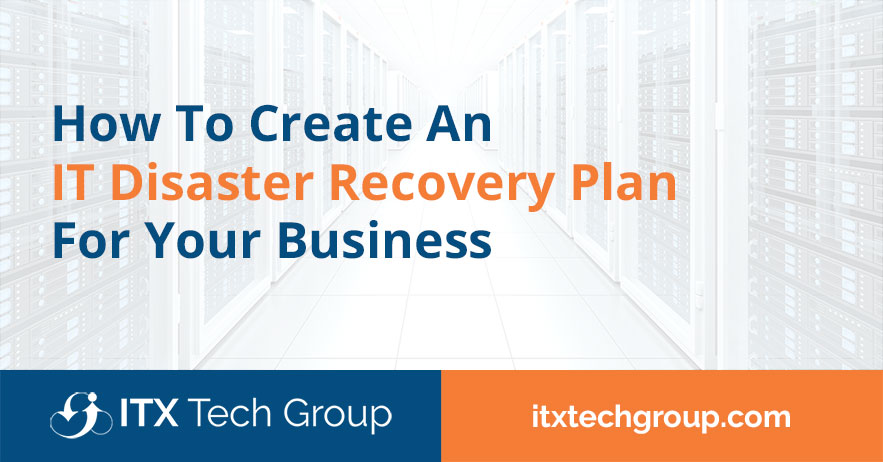No business is immune to the risk of unexpected disasters, whether it’s a natural calamity, cyberattack, hardware failure, or human error.
A well-thought-out disaster recovery plan is a critical component of any effective business strategy, ensuring continuity, data protection, and minimal downtime in the face of adversity.
In this blog article, we will explore the step-by-step process of creating a comprehensive disaster recovery plan that safeguards your business and helps you bounce back from unforeseen challenges.
Conduct a Risk Assessment
The first step in creating a disaster recovery plan is to assess potential risks and vulnerabilities that could impact your business. Identify internal and external threats, such as hardware failures, cyber threats, power outages, or natural disasters.
Understanding the risks allows you to prioritize critical assets and create a targeted recovery strategy.
Define Recovery Objectives
Set clear recovery objectives for your business. Determine the maximum acceptable downtime (Recovery Time Objective or RTO) and the maximum data loss you can tolerate (Recovery Point Objective or RPO) for each critical system and application.
These objectives will serve as benchmarks for measuring the effectiveness of your disaster recovery efforts.
Create a Recovery Team
Establish a dedicated disaster recovery team comprising representatives from various departments, including IT, operations, finance, and communication. Assign roles and responsibilities to team members, defining clear lines of communication and escalation procedures during a crisis.
Inventory Critical Assets and Data
Identify and inventory all critical assets, including hardware, software, applications, and data repositories. Categorize assets based on their importance to business operations and prioritize recovery efforts accordingly.
Develop Data Backup and Recovery Strategies
Implement regular, automated data backups for all critical systems. Determine the most appropriate backup methods, such as full backups, incremental backups, or differential backups.
Store backup data in secure offsite locations or cloud-based storage to ensure redundancy and protection against on-premises disasters.
Establish Communication Protocols
In a crisis, effective communication is essential. Establish clear communication protocols for internal and external stakeholders, ensuring that employees, customers, suppliers, and partners are promptly informed about recovery efforts and status updates.
Draft Contingency Plans for Different Scenarios
Create contingency plans for various disaster scenarios based on the identified risks. Develop specific action plans for events like natural disasters, cyberattacks, system failures, and data breaches. Each plan should outline response procedures, roles, and recovery steps to be followed.
Test and Validate the Plan
Regularly test and validate your disaster recovery plan through simulated exercises and drills. These tests will help identify potential weaknesses in the plan and allow your recovery team to gain hands-on experience in executing recovery procedures.
Continuously refine and update the plan based on the results of these tests.
Train Employees
Educate your employees about the disaster recovery plan and their roles during a crisis. Conduct training sessions to familiarize them with the plan’s procedures, communication protocols, and their responsibilities in ensuring a smooth recovery process.
Review and Update Regularly
Disaster recovery planning is not a one-time activity. Regularly review and update the plan to accommodate changes in technology, business processes, or risk landscape. As your business evolves, the disaster recovery plan should remain flexible and adaptable to new challenges.
Conclusion
Creating a disaster recovery plan is an essential investment in the resilience and longevity of your business.
By conducting a risk assessment, defining recovery objectives, and developing data backup and recovery strategies, you can protect critical assets and ensure business continuity during challenging times.
Establishing clear communication protocols, drafting contingency plans, and testing the plan through simulations will enable your recovery team to respond effectively to any disaster scenario.
By training employees and continuously reviewing and updating the plan, your business can confidently navigate unforeseen challenges and emerge stronger from any crisis.
A well-prepared disaster recovery plan is a cornerstone of business readiness, demonstrating your commitment to your customers, employees, and stakeholders in maintaining a reliable and secure business environment.
ITX Tech Group has been serving small, medium, and large scale businesses with their IT support needs all over the United States since 2011, so we’re confident we can provide you with affordable, professional IT solutions for years to come!
Connect with us for a free consultation to discuss your business technology needs.

